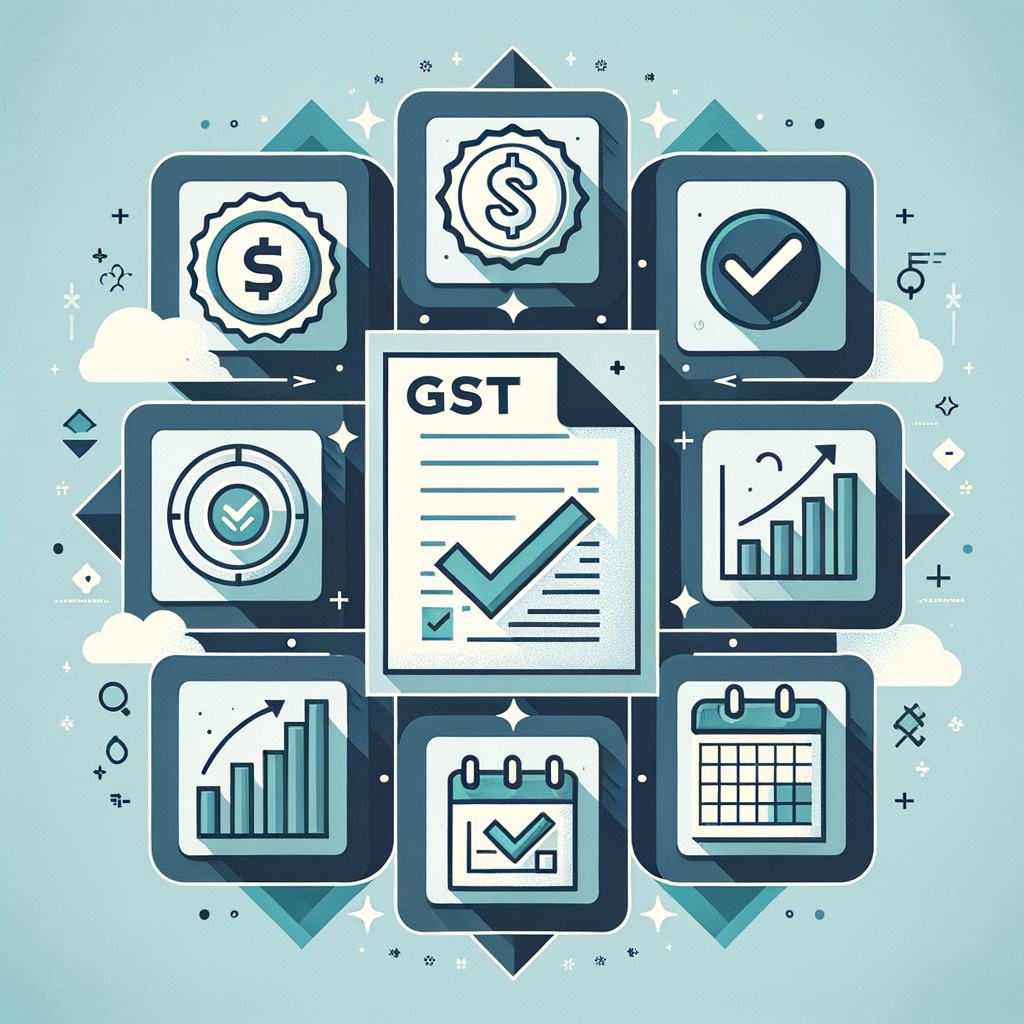How to Handle GST Compliance for Service Providers: A Complete Guide
Are you a consultant, freelancer, or small business owner providing services in India? While you focus on delivering excellent work, managing GST can seem like a complex challenge. But it doesn’t have to be. Adhering to the Goods and Services Tax (GST) laws is not just a legal requirement; it’s a cornerstone of a financially healthy and scalable business, protecting you from penalties and legal scrutiny. This comprehensive guide is designed to simplify GST compliance for service providers. We will break down everything from registration and invoicing to filing returns, offering a clear roadmap for handling GST compliance in India and empowering you to manage your tax obligations with confidence.
Understanding GST Basics for Service Providers in India
Before diving into the procedural aspects, it’s essential to grasp the fundamental concepts of GST. This foundation will help you understand why certain processes are in place and how they affect your business operations. Misunderstanding these basics is often the root cause of compliance errors, so taking the time to learn them is a crucial first step for any serious service provider in the Indian market.
What is GST and Why is it Important?
Goods and Services Tax (GST) is an indirect tax that has replaced many other indirect taxes in India, such as VAT, service tax, and excise duty. It is a destination-based tax, meaning it’s levied at the final point of consumption. For service providers, this system streamlines the tax structure, creating a unified market across the country. Understanding its components is vital for correct invoicing and tax payment.
There are three main components of GST that you will encounter:
- CGST (Central GST): This tax is collected by the Central Government on an intra-state supply of services (i.e., when the service provider and the service recipient are in the same state).
- SGST (State GST): This tax is collected by the State Government on the same intra-state supply of services. When you bill a client in the same state, your invoice will show both CGST and SGST, typically split equally (e.g., if the rate is 18%, it will be 9% CGST + 9% SGST).
- IGST (Integrated GST): This tax is collected by the Central Government on an inter-state supply of services (i.e., when the service provider and the service recipient are in different states). Instead of splitting the tax, a single IGST rate is applied (e.g., 18% IGST).
Correctly identifying the nature of your service supply (intra-state vs. inter-state) is the first step toward accurate GST compliance, as it directly determines which tax you need to charge and remit to the government.
When Do Service Providers Need to Register for GST?
Understanding the registration threshold is the first critical step in your compliance journey. For most service providers in India, GST registration becomes mandatory once your aggregate turnover in a financial year exceeds ₹20 lakhs. Aggregate turnover includes the total value of all taxable supplies, exempt supplies, exports, and inter-state supplies under the same PAN. For businesses located in the Special Category States (like those in the North-East), this threshold is lower at ₹10 lakhs.
However, turnover isn’t the only trigger. There are specific scenarios where GST registration is compulsory, regardless of your annual turnover. These are critical to know, as overlooking them can lead to significant penalties. Some of these situations include:
- Making any inter-state taxable supply (e.g., a consultant in Maharashtra providing services to a client in Karnataka).
- Being liable to pay tax under the Reverse Charge Mechanism (RCM), where the recipient of certain services is liable to pay the GST instead of the supplier.
- Providing services as a casual taxable person or a non-resident taxable person.
- Acting as an agent for a supplier.
These GST regulations for service providers in India are strict, and proactive registration is always better than facing penalties for non-compliance. For a complete overview, see our Ultimate Guide to GST Registration for Small Businesses. You can begin the process on the official GST Portal.
Your Step-by-Step Guide to GST Registration
Once you’ve determined that you need to register for GST, the next step is to complete the application process. The entire procedure is online, making it accessible and relatively straightforward if you have all the necessary information and documents ready. A systematic approach can help you avoid errors and get your GST Identification Number (GSTIN) without unnecessary delays.
Documents Required for Registration
Before you start the online application, gather the following documents. Having digital copies scanned and ready will make the process much smoother. For a sole proprietor or individual service provider, the list is quite simple:
- PAN Card: Your Permanent Account Number is mandatory for GST registration.
- Aadhaar Card: For authentication purposes.
- Photograph: A passport-sized photograph of the proprietor.
- Proof of Business Address: This can be a recent electricity bill, a property tax receipt, or a valid rent agreement if the premises are rented.
- Bank Account Details: A scanned copy of a cancelled cheque or a recent bank statement to verify your business bank account.
The Online Registration Process in Brief
The registration process is divided into two parts on the official GST portal. Following these steps carefully will ensure your application is processed efficiently.
- Generate a TRN: Visit the GST Portal and navigate to Services > Registration > New Registration. Fill out Part-A of Form GST REG-01 with your basic details like PAN, mobile number, and email address. After OTP verification, you will receive a Temporary Reference Number (TRN).
- Complete the Application: Use the TRN to log back in and start filling out Part-B of the form. This is where you will provide detailed information about your business, promoters, and authorized signatories, and upload the documents listed above.
- Submit and Verify: After carefully filling in all the details, you must submit the application using a Digital Signature Certificate (DSC) or E-Aadhaar verification.
- Receive ARN and GSTIN: Upon successful submission, you will receive an Application Reference Number (ARN). You can use this to track the status of your application. A tax officer will verify your application, and if everything is in order, you will be granted your GSTIN (GST Identification Number) and registration certificate.
Core GST Compliance Requirements for Service Providers
Registration is just the beginning. The real work of how to handle GST compliance lies in the day-to-day activities of invoicing, filing returns, and maintaining records. These core requirements form the backbone of your GST obligations and are essential for keeping your business in good legal standing.
Creating GST-Compliant Invoices
Every time you provide a service, you must issue a Tax Invoice. This is not just a bill; it’s a crucial legal document under GST law. A compliant invoice is necessary for your client to claim Input Tax Credit (ITC) and for you to maintain proper sales records. Your invoice must contain several mandatory fields to be considered valid:
- Your business name, address, and GSTIN.
- A unique, consecutive invoice number and the date of issue.
- The recipient’s name, address, and GSTIN (if they are registered).
- Place of Supply (POS): This determines whether CGST/SGST or IGST is applicable.
- SAC (Services Accounting Code): A unique code for your specific service that helps classify it and determine the correct tax rate.
- A clear description of the services provided.
- The taxable value of the service, tax rate (broken down into CGST, SGST, or IGST), and the total tax amount.
- Signature or digital signature of the authorized person.
Filing Accurate GST Returns
Filing GST returns is a periodic activity where you declare your sales, purchases, and resulting tax liability to the government. For most regular service providers, two returns are of primary importance:
- GSTR-1 (Statement of Outward Supplies): This is where you report the details of all the invoices you have issued to your clients during a tax period. Depending on your turnover, this needs to be filed either monthly (by the 11th of the next month) or quarterly.
- GSTR-3B (Summary Return): This is a summary return where you declare your total sales, ITC claimed, and the final GST liability you need to pay. This return must be filed monthly (by the 20th of the next month), along with the tax payment.
It is crucial to file these returns on time, even if you had no business transactions in a period (this is known as filing a ‘Nil’ return). For a complete walkthrough of the process, refer to our guide on How to File GST Returns Online: A Step-by-Step Guide of the GST Filing Process & Procedure. Failure to file on time attracts late fees and interest on the unpaid tax amount, which can accumulate quickly.
Maintaining Proper Records and Claiming Input Tax Credit (ITC)
One of the biggest advantages of the GST regime is the ability to claim Input Tax Credit (ITC). In simple terms, ITC means you can reduce the GST you owe on your sales (output tax) by the amount of GST you have already paid on your business purchases (input tax). For example, if you paid GST on software subscriptions, office rent, or professional fees, you can claim that amount as credit.
To claim ITC correctly, you must:
- Possess a valid tax invoice from your supplier.
- Have received the goods or services.
- Ensure your supplier has filed their returns and paid the tax to the government.
This makes meticulous record-keeping non-negotiable. You must maintain detailed records of all your sales, purchases, expenses, and the corresponding tax invoices. Furthermore, you must regularly reconcile your purchase records with the data available in your GSTR-2A and GSTR-2B on the GST portal to ensure you are claiming the correct ITC.
A Practical Service Providers GST Compliance Checklist
Staying on top of your GST obligations can feel overwhelming. A simple checklist can help you manage your tasks systematically and ensure you don’t miss any critical deadlines. Use this Service providers GST compliance checklist to stay organized.
Monthly/Quarterly:
- Issue GST-compliant tax invoices for all services you provide.
- Reconcile your business bank statements with your accounting software or records.
- Carefully review GSTR-2B on the GST portal to verify your eligible Input Tax Credit for the month.
- File your GSTR-1 return with details of all your sales by the 11th (monthly filers) or 13th (quarterly filers) of the following month.
- File your GSTR-3B summary return by the 20th of the following month.
- Pay your final GST liability to the government on or before the GSTR-3B due date.
Annually:
- File the Annual Return (GSTR-9), if your aggregate turnover exceeds the specified limit (currently ₹2 crores).
- Reconcile your audited financial statements with the GST returns filed throughout the year to identify and correct any discrepancies.
Common GST Mistakes to Avoid
Even with the best intentions, service providers can make mistakes that lead to notices, penalties, or loss of ITC. Being aware of these common pitfalls is the first step toward avoiding them and ensuring smooth compliance.
Incorrect SAC/HSN Codes
Using the wrong Service Accounting Code (SAC) is a frequent error. The SAC determines the GST rate applicable to your service. An incorrect code can lead to you charging the wrong amount of tax—either undercharging, which results in a tax shortfall and interest, or overcharging, which is illegal and burdens your client. Always double-check the correct SAC for your specific service and mention it clearly on your invoices.
Delaying GST Payments and Filings
Procrastination can be expensive under the GST regime. The penalties for late filing are levied on a per-day basis and can add up quickly. Additionally, interest is charged on any delay in paying the tax liability. Missing a filing deadline also creates a domino effect, as you cannot file the return for the current period until all previous returns have been filed. This can disrupt your compliance cycle and lead to compounding penalties.
Not Reconciling Invoices for ITC
Many businesses fail to regularly reconcile their purchase invoices with their GSTR-2B. GSTR-2B is an auto-drafted statement that shows the ITC available to you based on the GSTR-1 returns filed by your suppliers. If a supplier fails to upload your invoice or reports it incorrectly, that credit will not appear in your GSTR-2B. Without proper reconciliation, you might either claim ineligible ITC (leading to penalties) or miss out on eligible ITC (leading to a higher tax outgo).
Conclusion
Mastering GST compliance is a fundamental aspect of running a successful service-based business in India. By focusing on the four pillars—timely registration, accurate invoicing, regular return filing, and meticulous record-keeping—you can build a strong foundation for your business. While the rules may seem intricate at first, a systematic approach transforms them into a manageable routine. Ultimately, strong GST compliance for service providers is not just about avoiding legal issues; it’s about fostering financial discipline, improving credibility with clients, and ensuring the long-term health and growth of your enterprise.
Navigating GST compliance requirements for service providers can be time-consuming. At TaxRobo, our experts are here to handle all your GST needs, from registration to filing, so you can focus on what you do best. Contact Us Today for a Free Consultation!
Frequently Asked Questions (FAQs)
Q1. I am a freelancer earning less than ₹20 lakhs a year. Do I need to register for GST?
A: Generally, no. If your aggregate turnover is below the ₹20 lakh threshold, you are not required to register. However, there is a crucial exception: if you provide services to clients in other states (inter-state supply), you are required to register for GST regardless of your turnover. This is a common point of confusion for many freelancers and consultants.
Q2. What is the difference between the Composition Scheme and the regular GST scheme for service providers?
A: The Composition Scheme is a simplified GST scheme for smaller taxpayers. For service providers with an aggregate turnover of up to ₹50 lakhs, it offers a lower, flat GST rate (currently 6%) and requires simpler, less frequent return filings. However, under this scheme, you cannot collect tax from your clients or claim Input Tax Credit (ITC) on your business expenses. The regular scheme has higher compliance requirements (monthly returns, detailed records) but allows you to collect tax and claim full ITC. For more details, you can read our guide on Understanding the Composition Scheme Under GST.
Q3. Can I claim Input Tax Credit on capital goods like a new laptop for my work?
A: Yes, absolutely. GST paid on capital goods such as a laptop, office furniture, or a printer that are used for business purposes is eligible for Input Tax Credit. To claim it, you must have a valid tax invoice from the seller in your business’s name and GSTIN, and you must adhere to all other conditions for claiming ITC.
Q4. What happens if I forget to file a GST return for a month?
A: Forgetting to file a GST return triggers several consequences. First, a late fee is levied for every day of delay (subject to a maximum cap). Second, if you have a tax liability for that month, you will have to pay interest on the outstanding amount for the period of delay. Third, the GST system is sequential; you will be blocked from filing the return for the next tax period until you file the pending return from the previous period, creating a backlog.



